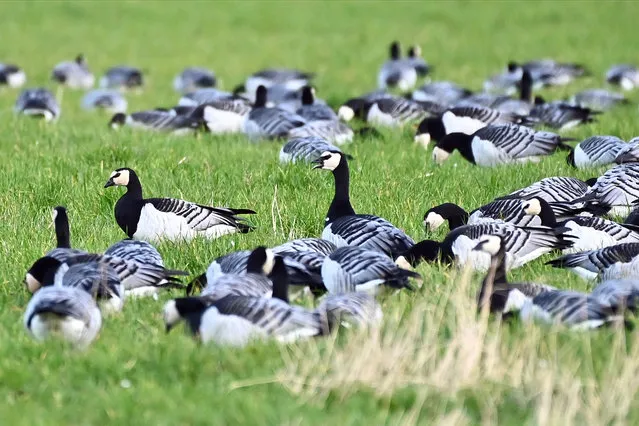
Barnacle geese in a field at the RSPB Mersehead nature reserve on the Solway Firth, on October 20, 2019 in Southerness, Scotland. Tens of thousands of barnacle geese return to the Solway each autumn from their breeding grounds some 2000 miles away in the Svalbard archipelago inside the arctic circle.(Photo by Ken Jack/Getty Images)
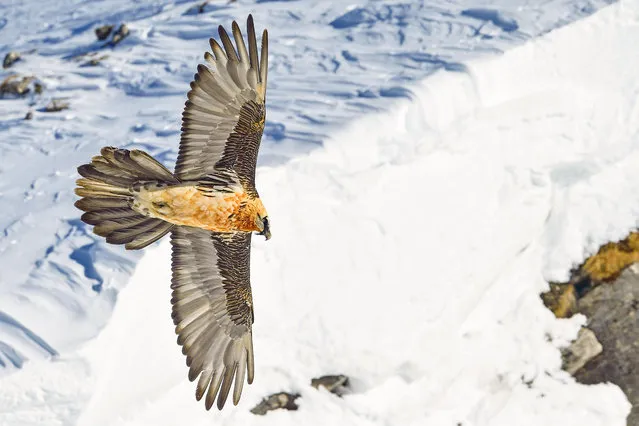
There are now a total of 250 bearded vultures, including 50 breeding pairs, in the Alps. After being hunted to extinction in the region in the early 20th century, bearded vultures are coming back in numbers, thanks to a captive breeding and reintroduction project begun in the late 1980s. (Photo by Hansruedi Weyrich/The Guardian)
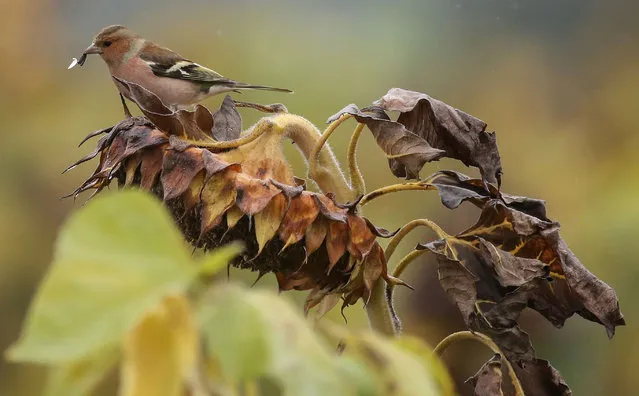
A bird holds a seed as it rests on a withered sunflower in Daugendorf, southern Germany on October 9, 2019. (Photo by Thomas Warnack/dpa/AFP Photo)
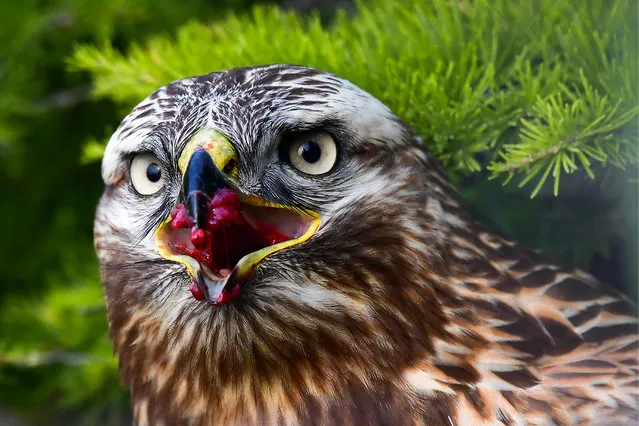
A rough-legged buzzard in the forest in the Khabarovsk Territory, on Russia's Pacific coast on August 13, 2019. (Photo by Yuri Smityuk/TASS/Barcroft Media)
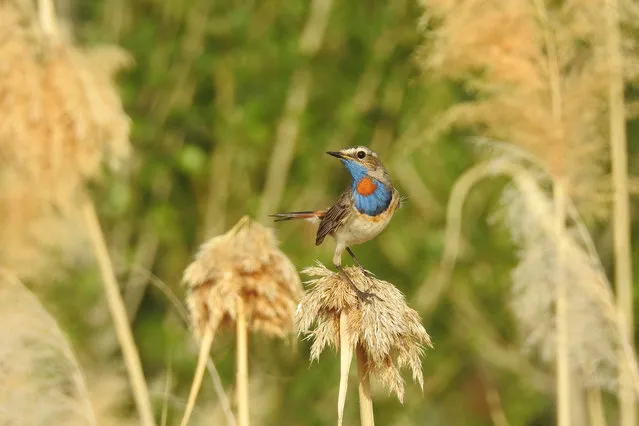
A bluethroat in Xinjiang, China. (Photo by Costfoto/Barcroft Media)
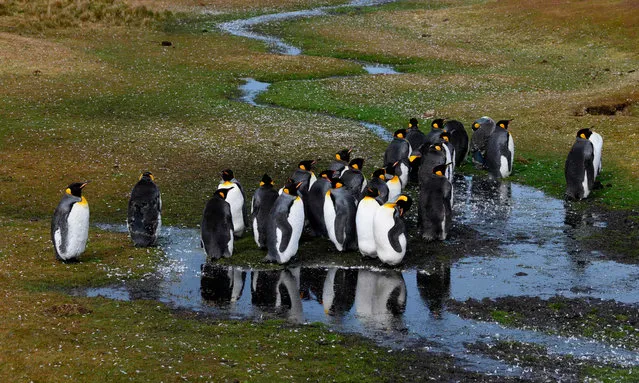
King penguins are seen at Volunteer Point, north of Stanley in the Falkland Islands (Malvinas), a British Overseas Territory in the South Atlantic Ocean, on October 6, 2019. The Falklands has an incredibly rich biodiversity including more than 25 species of whales and dolphins, but it is the guaranteed ability to get up close and personal with penguins that makes it such an enticing destination. There are five penguin species in the archipelago – King, Rockhopper, Gentoo, Magellanic and Macaroni. (Photo by Pablo Porciuncula Brune/AFP Photo)
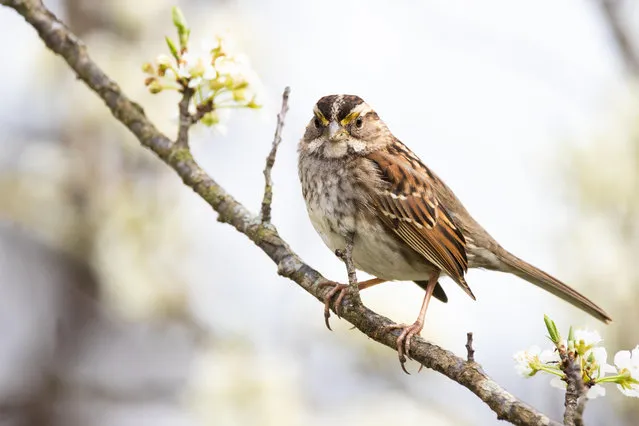
A white-throated sparrow rests on a blooming branch in Forsyth County, NC, US. The white-throated sparrow is one of the species believed to be particularly at risk from building collisions, which scientists estimate kills up to a billion birds a year in the US. (Photo by Matthew Cuda/Alamy Stock Photo)
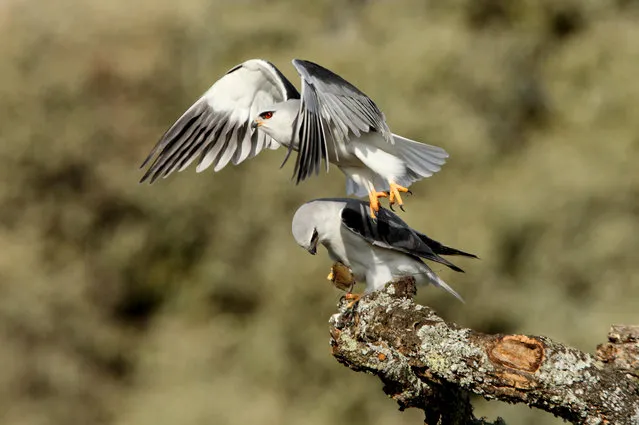
A black-winged kite in Spain. (Photo by Alamy Stock Photo)
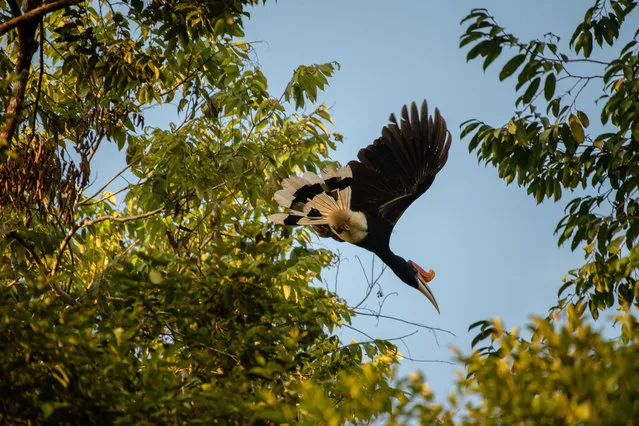
A rhinoceros hornbill flies in the jungle canopy along the Kinabatangan river in Sabah, Borneo. Deforestation in Malaysia and Indonesia has endangered wildlife, which depends on forest connectivity to survive, by isolating it from large foraging grounds. Now, some plantations are working with WWF Malaysia to create ecological corridors to enable the animals, especially the endangered Borneo elephant, to travel between forest patches. (Photo by Chris J. Ratcliffe/WWF UK)
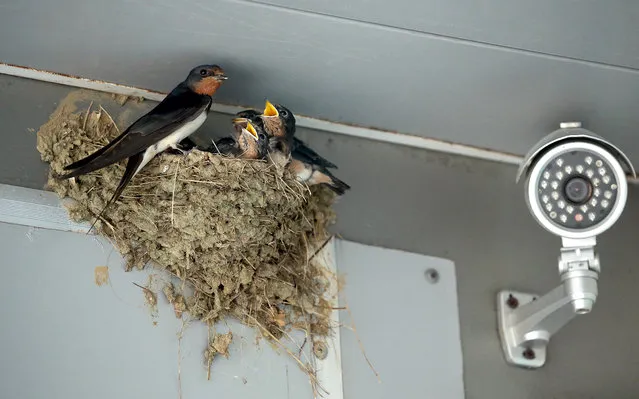
A swallow feeds its nestlings on Russky Island near Vladivostok, Russia on September 6, 2019. (Photo by Alexander Ryumin/TASS)
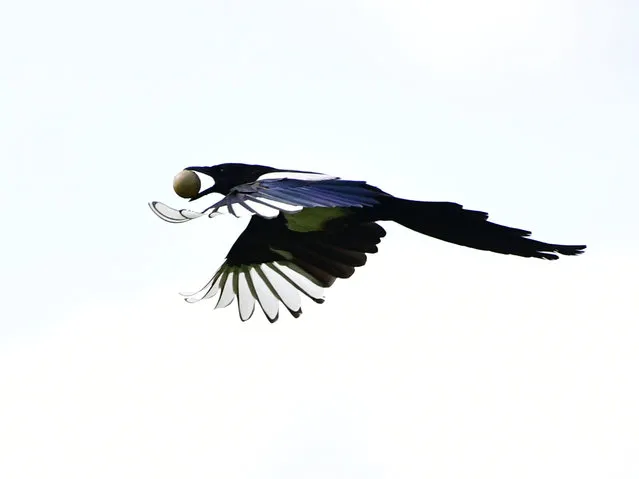
A magpie steals an egg in Harbin, China. (Photo by Costfoto/Barcroft Media)
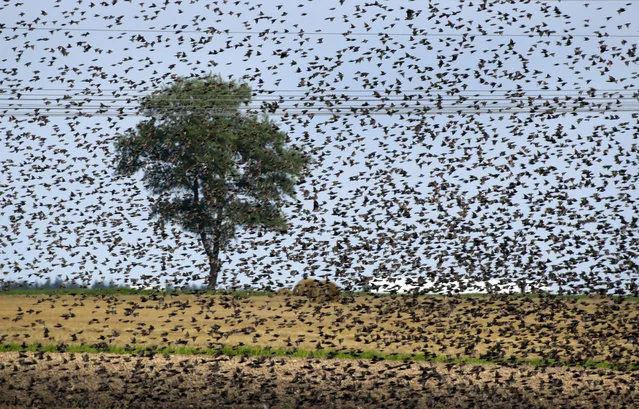
A flock of European starlings massing in the sky in a field during a sunny summer day on the outskirts of Minsk, Belarus, Tuesday, July 30, 2019. (Photo by Sergei Grits/AP Photo)
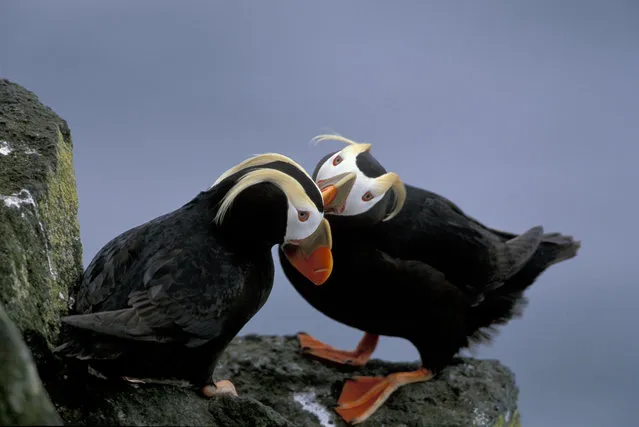
Tufted puffins (Fratercula cirrhata) preen on a cliff. A study found between 3,150 and 8,500 seabirds died over a four-month period from October 2016 in the Bering Sea, probably because of climate breakdown. (Photo by Danita Delimont/Alamy Stock Photo)
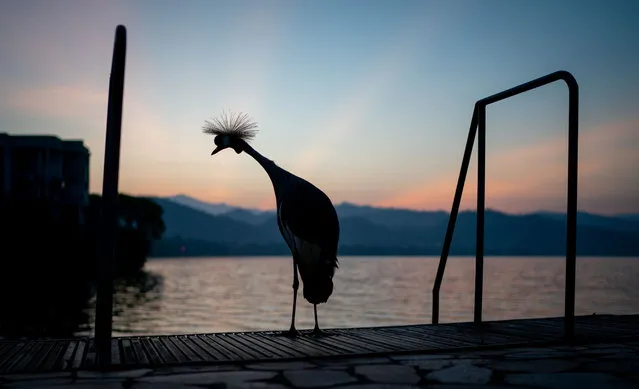
A crane stands on the shore of Kivu, on the border between the Democratic Republic of the Congo and Rwanda on September 4, 2019. (Photo by Kay Nietfeld/dpa)
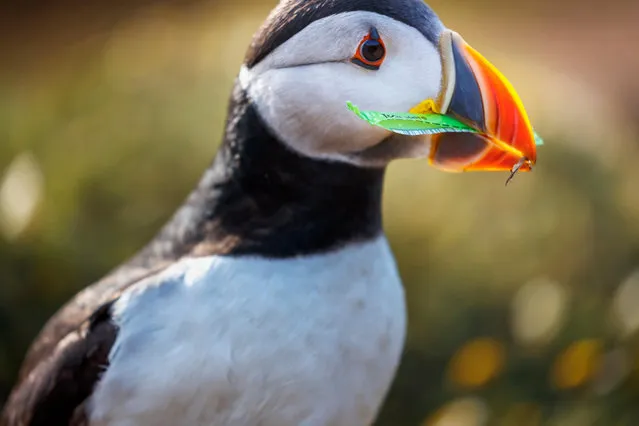
An Atlantic puffin (Fratercula arctica) carries a strip of green plastic rubbish collected for nesting material in its burrow on Skomer, west Wales. (Photo by Graham Prentice/Alamy Stock Photo)
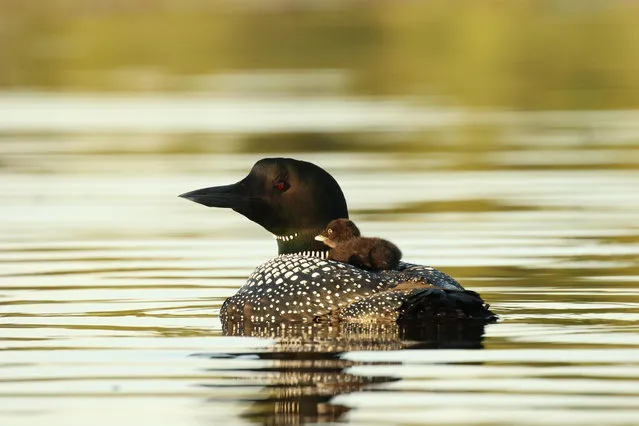
A common loon carrying a chick on its back in Eastern Ontario, Canada. (Photo by Heather King/Alamy Stock Photo)
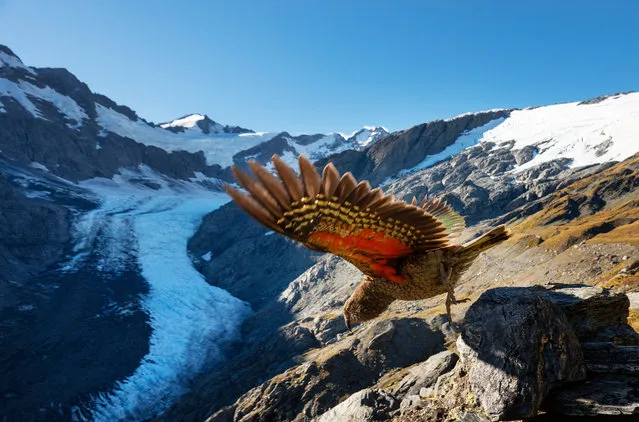
An endangered kea on the Dart Glacier in New Zealand. The world’s only alpine parrot is known for its curiosity. (Photo by Murdo MacLeod/The Guardian)
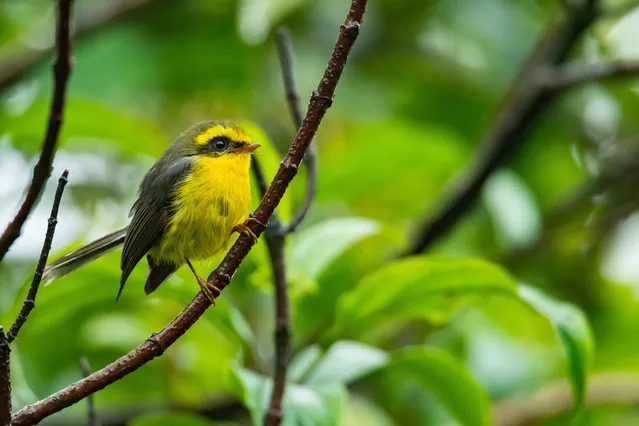
Cute and beautiful yellow-bellied fairy-fantail perching on a branch, Thailand. (Photo by Phichak/Alamy Stock Photo)
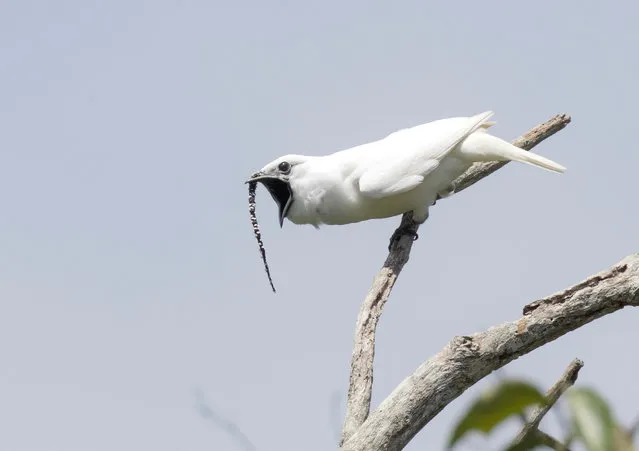
A male white bellbird, which lives in the mountains of the north-eastern Amazon and was recorded at 125 decibels when screaming its mating call, three times louder than the next bird in the pecking order, the screaming piha, in a study published this week. (Photo by Anselmo d’Affonseca/Cell Press)
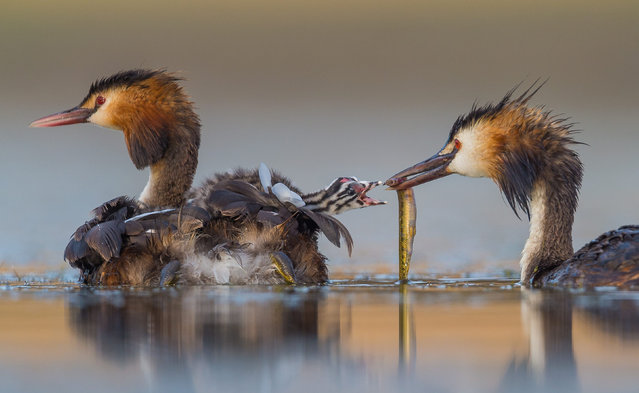
A great crested grebe feeds a chick sitting on its mother’s back on a lake in Cáceres, Spain. (Photo by Jose Luis Ruiz/Solent News & Photo Agency)
03 Nov 2019 00:03:00,
post received
0 comments
